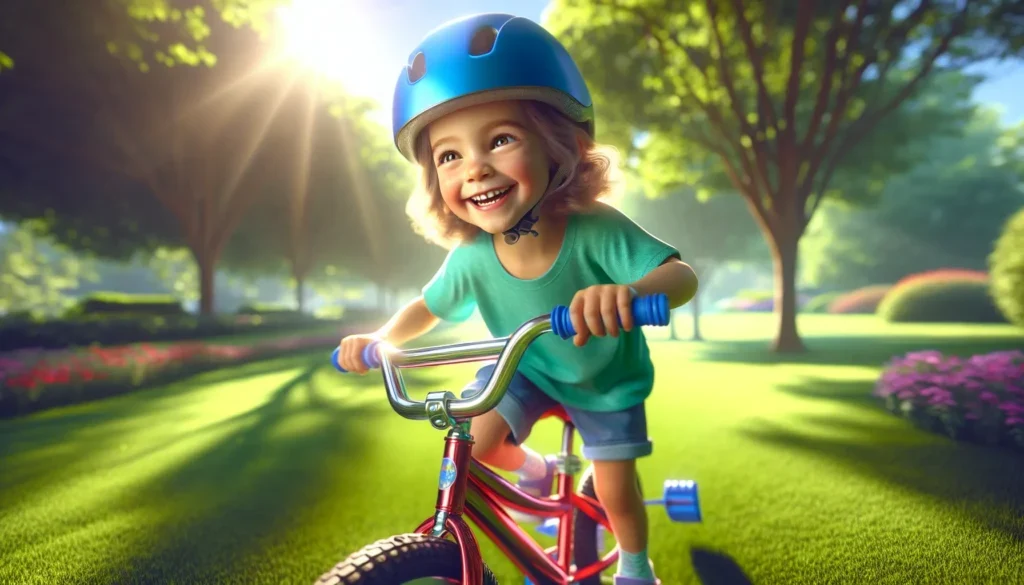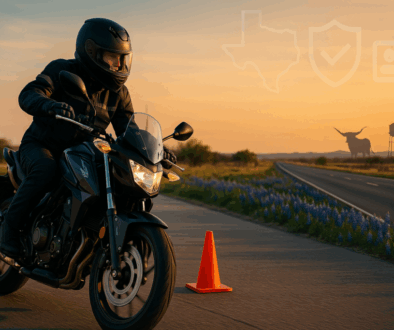How to Ride a Bike: Step-by-Step Guide for Beginners to Learn with Confidence
Key Takeaways
- Learning to ride a bike boosts physical fitness, confidence, and mental well-being while being eco-friendly and cost-effective.
- Choosing the right bike, wearing proper safety gear, and finding a suitable practice location are essential for a safe and enjoyable learning experience.
- Master key skills like balancing, steering, pedaling, and braking through step-by-step practice in a calm and safe environment.
- Overcome challenges such as fear of falling by lowering the bike seat, wearing protective gear, and practicing regularly with small, manageable steps.
- Avoid common mistakes like skipping safety gear, improper bike fit, over-gripping handlebars, or practicing in busy areas to ensure steady progress.
- Building confidence through consistent practice and support, such as riding with a friend, makes the learning process fun and fulfilling.
Learning to ride a bike is one of those unforgettable milestones. I still remember the mix of excitement and nerves as I wobbled down the sidewalk for the first time. Whether you’re just starting out or teaching someone else, it’s all about finding the right balance—literally and figuratively!
Benefits Of Learning How To Ride A Bike
Riding a bike improves physical fitness by engaging various muscle groups, especially in the legs and core. It helps build strength, endurance, and coordination through regular use.
It promotes mental well-being by reducing stress and boosting mood. Cycling releases endorphins, which enhance happiness and reduce anxiety.
It’s environmentally friendly, reducing carbon emissions compared to vehicles. Using a bike for short commutes is an efficient way to reduce your ecological footprint.
Learning to ride fosters confidence and independence. It’s a practical skill that encourages self-reliance, especially when navigating daily errands or exploring new areas.
It creates opportunities for social connections. Group rides with friends or local cycling clubs help form bonds and strengthen relationships.
Cost savings increase with bike use instead of fuel-powered transport. Bikes eliminate expenses like gas, parking fees, and maintenance associated with cars.
It’s adaptable for all ages and fitness levels. Whether you’re riding for leisure or transportation, biking accommodates diverse preferences and goals.
Preparing To Ride
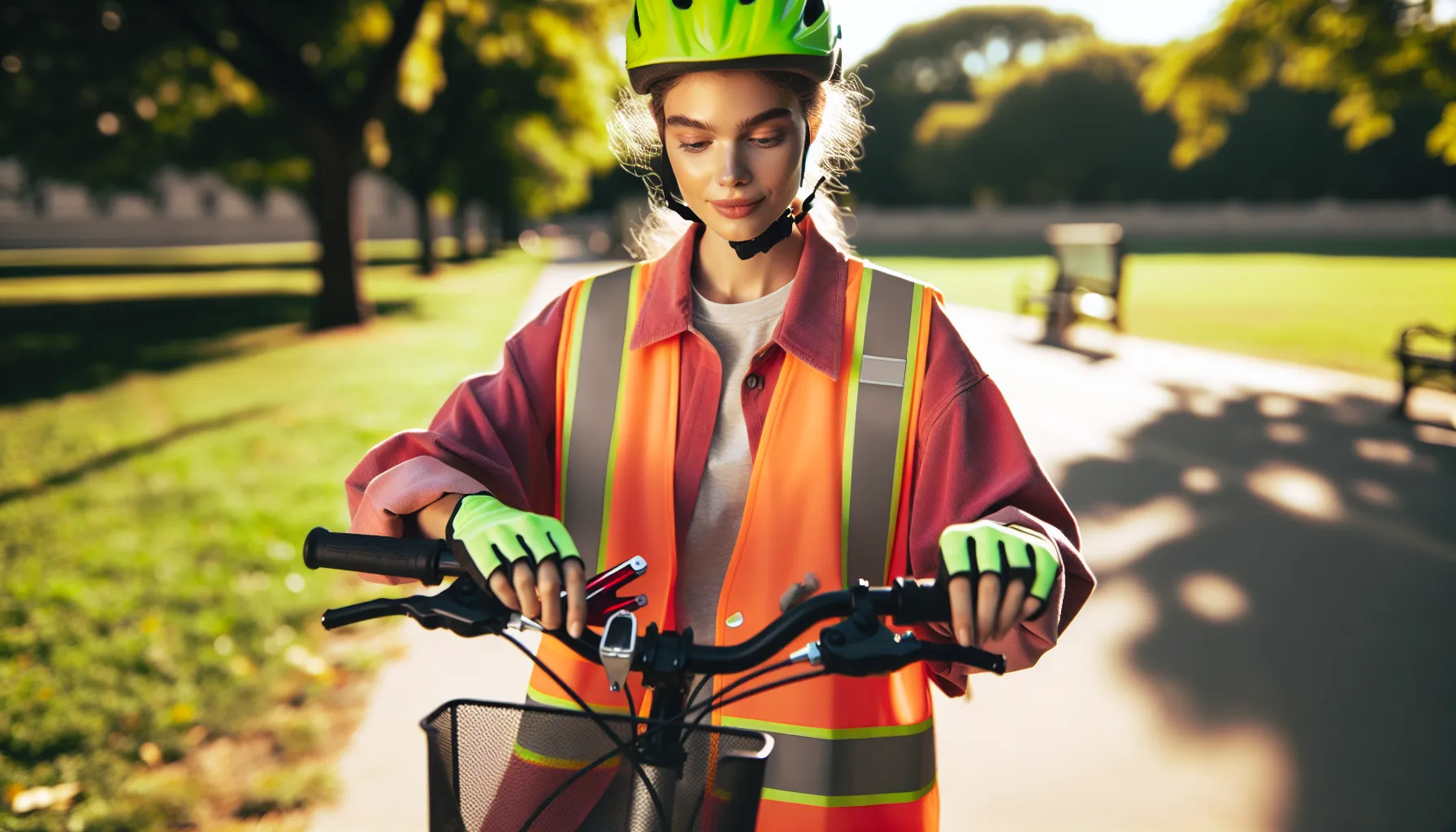
Getting ready to ride sets the foundation for a fun and safe experience. Starting with the right gear and location makes the process smoother for any beginner.
Choosing The Right Bike
I start by selecting a bike that fits my height and riding needs. A bike with an adjustable seat and handlebars works best for comfort and control. For beginners, I recommend selecting a bike with basic features, such as a single-speed or coaster brake. Mountain bikes handle uneven terrains, while road bikes perform well on smooth surfaces.
Safety Gear And Equipment
I never ride without proper safety gear. A helmet certified by CPSC ensures protection during falls. I wear closed-toe shoes for a better grip on the pedals. Visibility improves with reflective clothing or accessories, especially during lower-light conditions. Properly functioning brakes, working lights, and a bell add to bike safety.
Finding A Suitable Location
I prefer flat, open spaces like parks or quiet streets with minimal traffic. Smooth pavement or dirt trails without obstacles ensure better learning conditions. Avoiding crowded or noisy areas helps create a stress-free environment while practicing balance and control.
Step-By-Step Guide On How To Ride A Bike
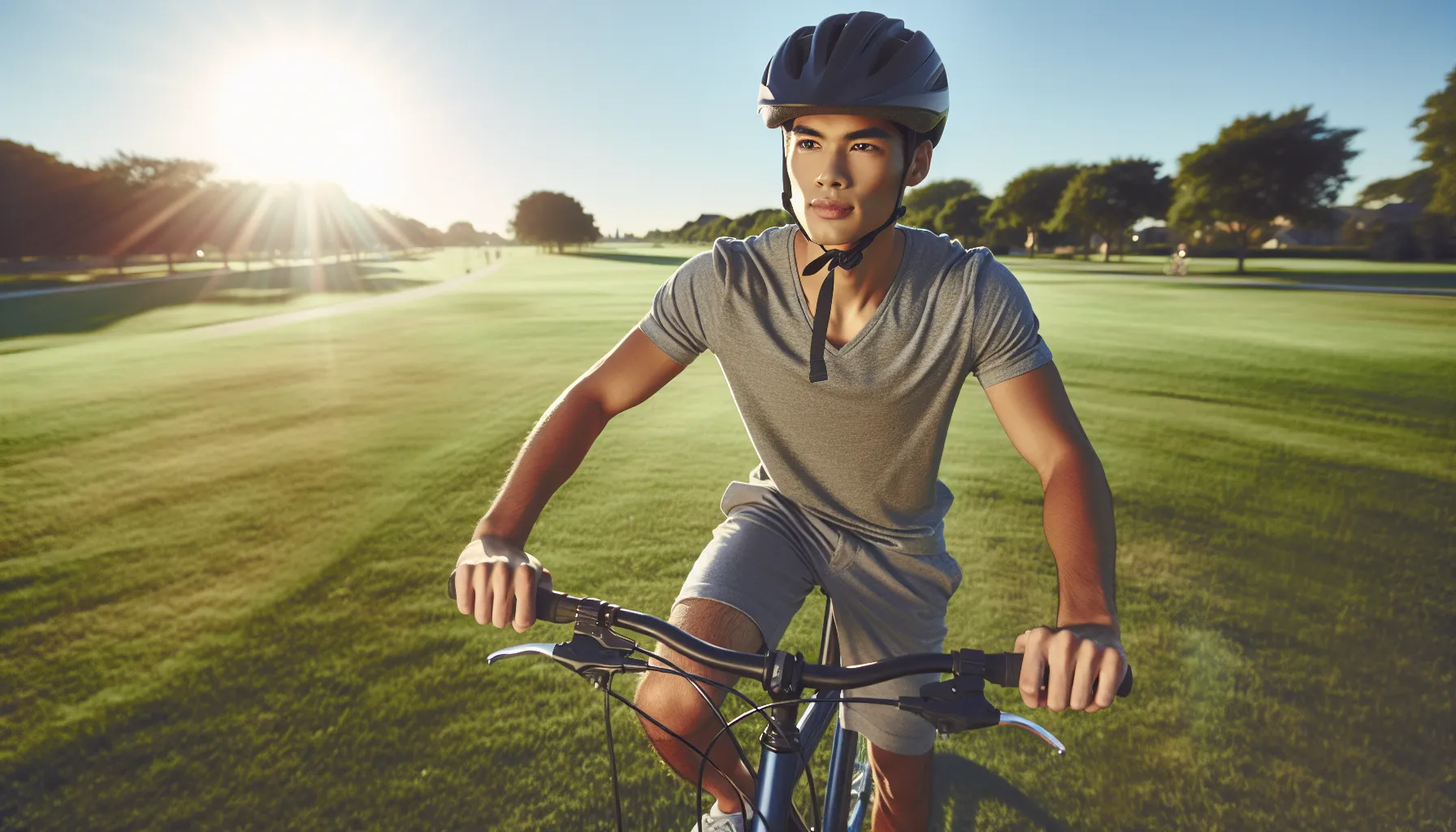
Learning to ride a bike can be broken down into manageable steps, making the process simple and enjoyable. Here’s a detailed guide to get started.
Mounting And Balancing
I begin by positioning the bike on a flat, open surface. Standing to one side, I hold the handlebars and press the brakes to keep the bike stable. I then swing one leg over the seat, ensuring I’m comfortably seated with feet flat on the ground. Keeping my hands firm on the handlebars, I practice balancing by gently lifting my feet and letting the bike roll slightly while maintaining control.
Starting And Stopping
To start, I set one pedal at the 2 o’clock position and place my dominant foot on it. I push down firmly and simultaneously lift my other foot to begin pedaling. For stopping, I gradually press both brake levers, avoiding sudden stops that might cause imbalance. I lower one foot to the ground to stabilize the bike before fully coming to a halt. Consistent practice helps me smoothly transition between starting and stopping.
Steering And Turning
Keeping my eyes forward, I hold the handlebars with a relaxed grip. To steer, I gently turn the handlebars in the direction I want to go, avoiding abrupt movements. When turning, I lean slightly into the turn while maintaining balance and an even pace. On each attempt, I refine my control by practicing wide and narrow turns to build confidence in maneuvering.
Pedaling Techniques
Once I’m comfortable with balance, I focus on smooth, consistent pedaling. I push down on one pedal while the opposite pedal rises, alternating my feet in a steady rhythm. I maintain a moderate speed to stabilize the bike and keep the motion fluid. Practicing on slight slopes helps me adjust pedaling strength, making transitions smoother as I gain experience.
Tips For Building Confidence
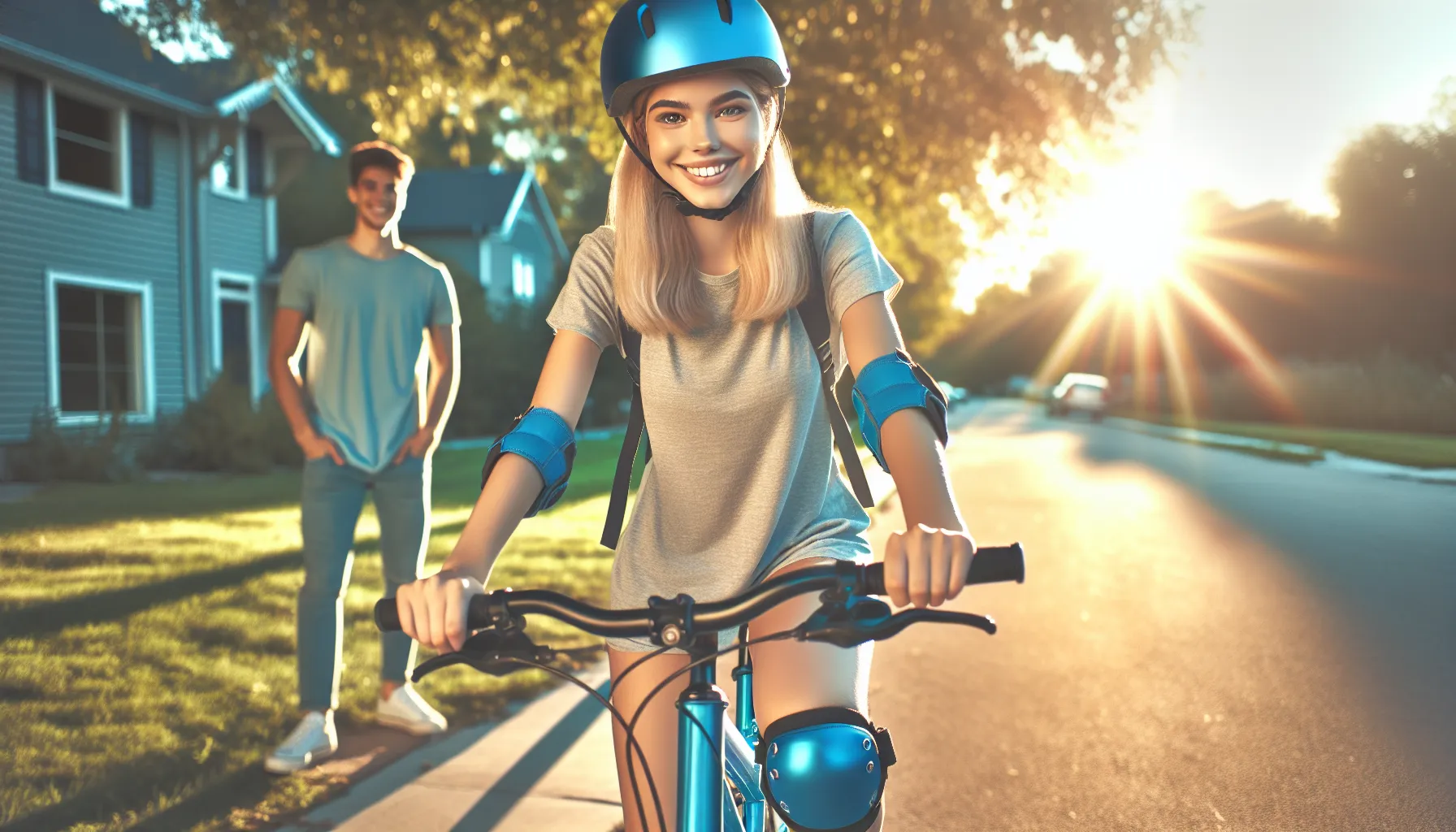
Building confidence while learning to ride a bike is as crucial as mastering techniques. Applying simple strategies can help overcome anxiety and foster self-assurance.
Overcoming Fear Of Falling
Recognizing the fear of falling helps manage it effectively. I lower the bike’s seat so my feet touch the ground, providing extra stability during practice. Wearing knee and elbow pads reduces worry about minor falls. Gradual challenges, like rolling down gentle slopes, keep my focus on control, not fear.
Practicing Regularly
Consistent practice reinforces skills and boosts confidence. I devote 15–30 minutes daily to riding, starting with basic balancing before advancing to pedaling and turning. Each session gets slightly more complex, making progress easy to track. Regular repetition trains both my mind and muscles for better coordination.
Riding With A Friend
Having a friend along makes learning enjoyable and supportive. I ask someone supportive to ride with me or guide me as I practice. Friends point out areas I can improve and celebrate every milestone. This reduces stress and makes difficult skills feel attainable.
Common Mistakes And How To Avoid Them
Avoiding common mistakes can make learning to ride a bike smoother and more enjoyable. Recognizing these errors early helps build skill and confidence more effectively.
Skipping Safety Gear
Riding without proper gear increases the risk of injury. I always wear a certified helmet, closed-toe shoes, and bright or reflective clothing to stay protected and visible.
Incorrect Bike Fit
Using a bike that doesn’t match your height or needs can cause discomfort and reduce control. I check the seat height, ensuring my feet touch the ground while seated, and confirm that the handlebars are easy to grip without overreaching.
Over-Gripping Handlebars
Holding the handlebars too tightly creates tension and makes steering less smooth. I practice keeping a relaxed grip, which allows better control and reduces fatigue.
Neglecting Balance Practice
Skipping balance practice often leads to difficulty during mounting or riding. I dedicate time to coasting without pedaling on gentle slopes to improve my stability on the bike.
Improper Braking
Sudden or harsh braking increases the chance of falls. I focus on applying brakes gradually and evenly on both wheels to slow down safely, especially when navigating turns or downhill paths.
Looking Down While Riding
Focusing on the ground instead of the path ahead disrupts coordination and balance. I keep my eyes on the direction I’m heading to anticipate any obstacles or changes in terrain.
Rushing Pedaling
Trying to pedal immediately after mounting can disrupt stability. I take a moment to secure my balance before engaging the pedals, ensuring a steady start.
Practicing in High-Traffic Areas
Learning in crowded or busy spaces adds unnecessary stress. I opt for quiet, open spots with minimal distractions to focus entirely on improving my skills.
Conclusion
Learning to ride a bike is such a rewarding journey. It’s not just about mastering a skill but also about embracing the freedom, confidence, and joy that come with it. Whether you’re starting out or helping someone else, patience and persistence truly pay off.
Take your time, enjoy the process, and remember that every wobble or fall is just a step closer to success. With the right mindset, preparation, and a little practice, you’ll be cruising along in no time. So grab your bike, gear up, and let the adventure begin!
Frequently Asked Questions
1. Why is learning to ride a bike important?
Learning to ride a bike improves physical fitness, boosts mental well-being, and fosters confidence. It’s an eco-friendly mode of transportation, encourages independence, and creates opportunities for social interaction. Riding also promotes coordination and balance, making it a valuable lifelong skill.
2. What do I need to prepare before learning to ride a bike?
Ensure you have a bike that fits your height, a CPSC-certified helmet, closed-toe shoes, and reflective clothing. Practice in flat, open areas with minimal traffic for a stress-free learning environment.
3. What are the key steps to learn how to ride a bike?
Start by practicing balance while seated on the bike, learn gradual braking and foot placement for starting and stopping, and work on smooth steering and pedaling techniques. Consistent practice on gentle slopes can improve your skills and confidence.
4. How can I overcome the fear of falling while learning?
Lower your bike seat for better stability and wear protective gear like knee and elbow pads. Practice on flat areas or gentle slopes with small challenges, and take it slow to build confidence gradually.
5. How much time should I spend practicing bike riding each day?
Dedicate 15–30 minutes daily to practice. Consistent sessions help reinforce skills, build confidence, and track progress without overwhelming yourself.
6. What are the most common mistakes to avoid while learning to ride a bike?
Avoid skipping safety gear, choosing an ill-fitted bike, gripping handlebars too tightly, or practicing in high-traffic areas. Focus on balance, gradual braking, and keeping your eyes on the path ahead.
7. Can adults learn to ride a bike, or is it only for kids?
Absolutely! Bike riding is a versatile activity suitable for all ages and fitness levels. Adults can learn to ride just as effectively with patience, proper guidance, and consistent practice.
8. How can I make learning to ride a bike more enjoyable?
Practice with a supportive friend or family member who can motivate and offer constructive feedback. Celebrate milestones together to make the experience fun and rewarding.
9. What type of bike is best for beginners?
Choose a bike that fits your height and has basic features, such as a lightweight frame and simple gears. Comfort bikes or hybrid bikes are great options for beginners due to their stability and ease of use.
10. What safety gear is essential while learning to ride a bike?
The most important safety gear includes a CPSC-certified helmet, closed-toe shoes, reflective clothing for visibility, and optional protective pads for added confidence during practice. Always prioritize safety to avoid injuries.

